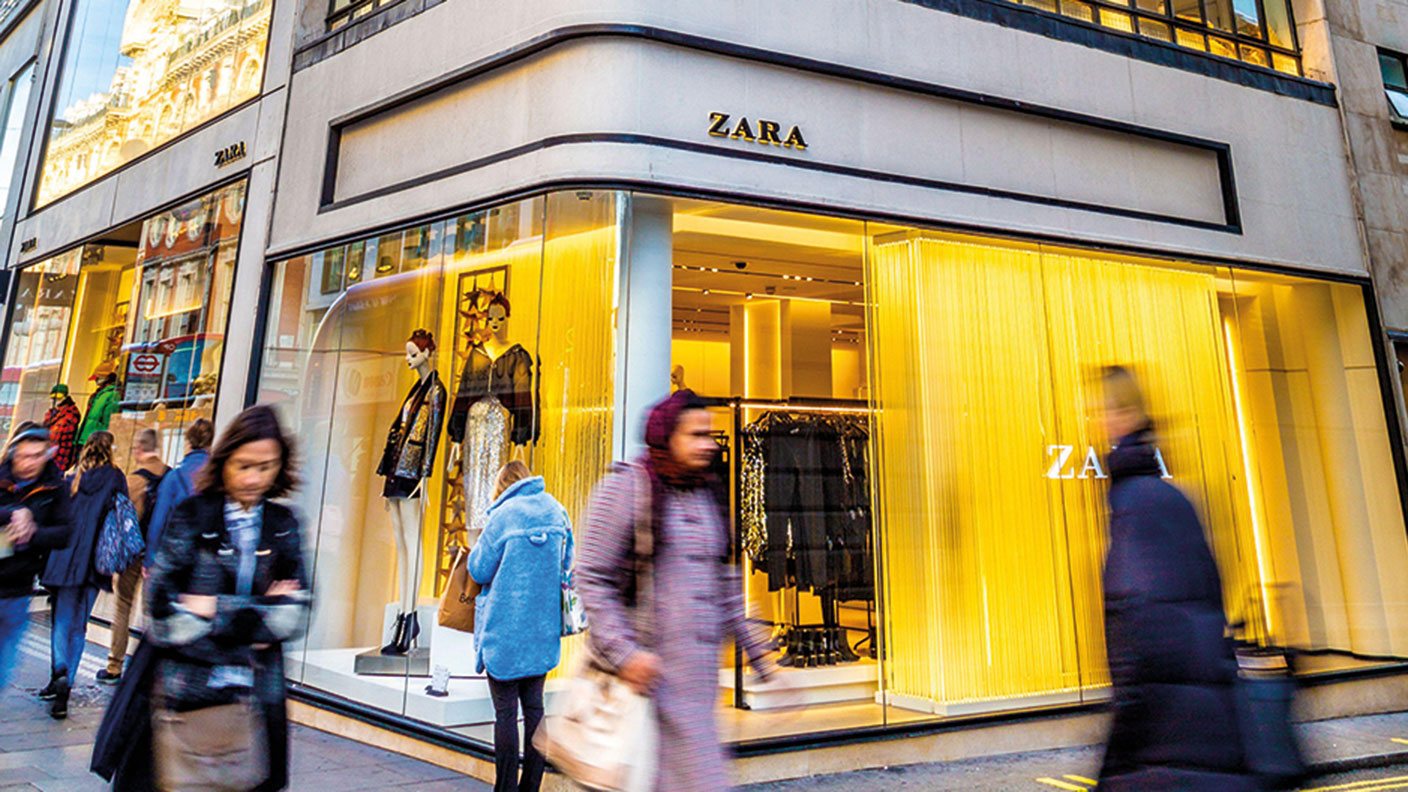Britain's high street comes back from the dead
Creative destruction has wrought its magic on the high street and there are new signs of life in retail, says Matthew Lynn


Ever since Woolworths closed its doors for the final time in 2008, the post-Christmas retail collapse has been as much a part of the festive season as leftover turkey and worryingly high credit-card bills.
Retailers are critically dependent on the festive season, often the one month when they actually make any money. Many of them would hang on, hoping that Christmas would save them for another year; when that didn’t happen, there would often be no choice but to call in the receivers. Comet, Blockbuster, Austin Reed, Maplin and Toys R Us are among the household names that have disappeared in this way over the last few years. Many more announced profit warnings or the closure of some stores.
People still like to shop
But so far, 2022 has not seen any major retail chains running into trouble. In fact, this is the first January in more than a decade when the high street hasn’t been in crisis. Trading seems to have been fairly buoyant. Next, by far the UK’s best-run retailer, reported another bumper set of results. All the others seem to have done at least OK too. Even M&S, at least at the time of writing, was expected to report a decent set of figures, and its share price is bouncing back. Store closures are slowing down and the high street seems to have touched bottom. There are three reasons for that.
MoneyWeek
Subscribe to MoneyWeek today and get your first six magazine issues absolutely FREE

Sign up to Money Morning
Don't miss the latest investment and personal finances news, market analysis, plus money-saving tips with our free twice-daily newsletter
Don't miss the latest investment and personal finances news, market analysis, plus money-saving tips with our free twice-daily newsletter
First, people still like to shop. Over the course of the pandemic, online sales jumped by ten percentage points to hit 33% of total retail spend across the UK. But as shops have reopened, the amount we spend on the internet has fallen back. We may now have reached a plateau where around a quarter of our money is spent over our phone or a computer, but the rest is within a physical shop. People still like to browse and try things out before they buy them. They like to get out of the house. And they don’t want to wait for a week and then have to retrieve a package from a neighbour.
Second, landlords have become more reasonable. One of the reasons so many chains went under was that they were locked into upwards-only rental agreements with the giant property companies that owned their stores. Many were perfectly happy to see a retailer disappear as they could just let out the space to someone who would pay more instead. Over the last couple of years, however, they started to notice that the malls and high streets are remaining empty for longer. They need to hang on to the tenants they have as there isn’t anyone else to take their place. The result? Landlords have started to ease off on rent rises and sometimes accept reductions instead, or tie payments to a percentage of sales. It makes it a lot easier for retailers to survive and to ride out a slump in sales.
Weeding out the weaklings
Finally, the retailers that have survived the last decade are in far better shape. They have been through a Darwinian process, with the weakest players taken out of the market, and only the strongest surviving. Let’s be honest – does anyone really miss shopping at British Home Stores or Comet? Austin Reed was hardly setting the fashion world alight; even Topshop had lost its edge to the likes of Primark and Zara.
The chains that remain are far better managed, with better ranges, a well-defined customer base, and helpful staff who might even know something about the stuff they are selling. It helps that far fewer of them are owned by private-equity firms that have loaded them up with unaffordable debts. Without that kind of financial engineering we might have a few more chains left than we do. Overall, the retailers who have made it through are well-run, with solid balance sheets – and they are far more likely to survive.
True, retailing is not exactly the future. It is hard to imagine it is going to replace the internet, nor is it where the great fortunes of the 2020s will be made. It still faces challenges, and one or two big names may still disappear before it is completely stable. But the post-Christmas collapse is behind us. The high street hit rock bottom in 2019 and 2020, and is about to stage a modest, if unspectacular recovery. Who knows, some of the shares may even be worth buying.
Get the latest financial news, insights and expert analysis from our award-winning MoneyWeek team, to help you understand what really matters when it comes to your finances.
Matthew Lynn is a columnist for Bloomberg, and writes weekly commentary syndicated in papers such as the Daily Telegraph, Die Welt, the Sydney Morning Herald, the South China Morning Post and the Miami Herald. He is also an associate editor of Spectator Business, and a regular contributor to The Spectator. Before that, he worked for the business section of the Sunday Times for ten years.
He has written books on finance and financial topics, including Bust: Greece, The Euro and The Sovereign Debt Crisis and The Long Depression: The Slump of 2008 to 2031. Matthew is also the author of the Death Force series of military thrillers and the founder of Lume Books, an independent publisher.
-
 Autumn Budget tax changes: how is your generation affected?
Autumn Budget tax changes: how is your generation affected?The chancellor expects everyone to do their bit to boost the nation's finances but the tax burden is by no means shared equally
-
 Revealed: pension savers ditch investment trusts and favour passive funds
Revealed: pension savers ditch investment trusts and favour passive fundsDemand for investment trusts is cooling among self-invested personal pension (Sipp) customers, who are increasingly choosing money market funds, passive funds and individual shares
-
 Leading European companies offer long-term growth prospects
Leading European companies offer long-term growth prospectsOpinion Alexander Darwall, lead portfolio manager, European Opportunities Trust, picks three European companies where he'd put his money
-
 How to harness the power of dividends
How to harness the power of dividendsDividends went out of style in the pandemic. It’s great to see them back, says Rupert Hargreaves
-
 Why Trustpilot is a stock to watch for exposure to the e-commerce market
Why Trustpilot is a stock to watch for exposure to the e-commerce marketTrustpilot has built a defensible position in one of the most critical areas of the internet: the infrastructure of trust, says Jamie Ward
-
 Tetragon Financial: An exotic investment trust producing stellar returns
Tetragon Financial: An exotic investment trust producing stellar returnsTetragon Financial has performed very well, but it won't appeal to most investors – there are clear reasons for the huge discount, says Rupert Hargreaves
-
 How to capitalise on the pessimism around Britain's stock market
How to capitalise on the pessimism around Britain's stock marketOpinion There was little in the Budget to prop up Britain's stock market, but opportunities are hiding in plain sight. Investors should take advantage while they can
-
 London claims victory in the Brexit wars
London claims victory in the Brexit warsOpinion JPMorgan Chase's decision to build a new headquarters in London is a huge vote of confidence and a sign that the City will remain Europe's key financial hub
-
 The consequences of the Autumn Budget – and what it means for the UK economy
The consequences of the Autumn Budget – and what it means for the UK economyOpinion A directionless and floundering government has ducked the hard choices at the Autumn Budget, says Simon Wilson
-
 Reinventing the high street – how to invest in the retailers driving the change
Reinventing the high street – how to invest in the retailers driving the changeThe high street brands that can make shopping and leisure an enjoyable experience will thrive, says Maryam Cockar
